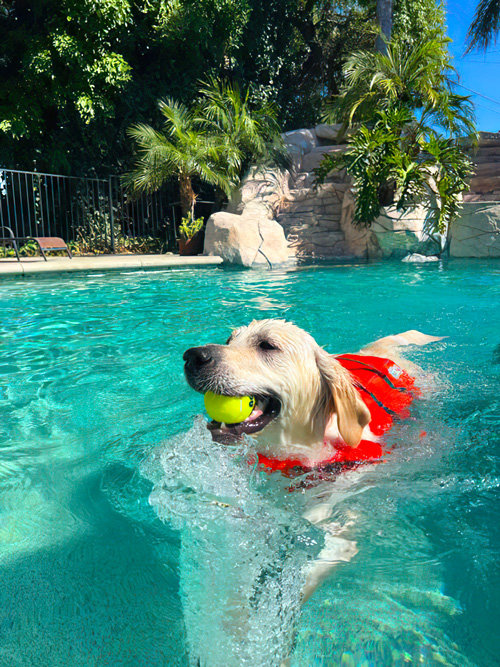Rattlesnake Training for Dogs Near Me: Find a Trainer

* All Sniffspot articles are reviewed by certified trainers for quality, please see bottom of article for details *
It’s important to think about the types of animals your dog may encounter if you spend time outdoors with them regardless of where you live. Any dog who spends time outdoors should have training in order to build a strong history of reinforcement for checking in with you, coming when called, and staying in your vicinity. Rattlesnakes and other venomous snake species are native to much of the United States. Rattlesnake encounters are most common in the southwest US, where many facilities also offer rattlesnake aversion or avoidance training.
The purpose of this post is to discuss positive reinforcement based snake avoidance training, but it is not an instruction manual. If you want this type of training for your dog, seek out an experienced, credentialed trainer who utilizes modern, science-backed, humane training methods.
The best and safest way to avoid rattlesnake bites is to simply avoid them altogether. Learn what they look like and where they live. Don’t take your dog out for hikes during peak snake season (generally spring and fall, but the specific times depend on the species). Use a well-fitted back-clip harness and a leash (or long line) to manage your dog and keep them near you. Train an emergency recall and bring high-value treats (something you know your dog LOVES and does not get often) to reinforce this very important behavior.
Even with rattlesnake avoidance training, regardless of the method, there is no 100%, fool-proof way of avoiding accidents, such as a bite from stepping on a rattlesnake. If you know you are hiking in rattlesnake territory, plan ahead and contact the nearest emergency veterinary clinics to make sure they have antivenom stocked.
Rattlesnakes don't want to harm us
Rattlesnakes (and wild animals in general) have an important ecological role in their native spaces. Snakes have been around for longer than humans or dogs, and their natural defenses are part of the reason. It’s not hard to understand why a venomous animal should be avoided and may be frightening, but snakes don’t seek out large mammals like humans or dogs for prey, so they have no reason to approach us. Far from a dramatic rattlesnake attack story, rattlesnake encounters generally occur when we stumble upon the areas they hunt or rest (or if we go looking for them, but that’s another story).
Rattlesnake bites to dogs occur when a snake defends itself (the same is true for human bites). Humans are more commonly bitten on extremities and dogs are commonly bitten in the face and chest if they are sniffing a snake at close range. See the section “What to do if your dog is bitten by a rattlesnake” for more information on rattlesnake bites. The next few sections discuss learning to identify rattlesnakes and the habitat they typically inhabit. The best way to avoid a rattlesnake bite is by avoiding the snakes altogether.
Rattlesnakes near your home
If you have rattlesnake habitat near your home, experts can remove and relocate snakes. The Free Snake Relocation Directory on Facebook is one resource.
Experts recommend landscaping with fewer hiding spots such as clumps of tall vegetation like grasses and shrubs. If you can see sunlight around plants and under structures, snakes are more likely to hang out there. Rattlesnakes in dry climates like the southwest are often looking for sources of water, so avoid irrigation and sources of water like birdbaths, ponds, or pools. This is especially important during periods of drought. Rattlesnakes are becoming more common and active with climate change. Rattlesnake exclusion fencing is an option if your property is surrounded by rattlesnake habitat. One-quarter inch hardware cloth is used for this type of fencing, and it is trenched into the ground. Rattlesnake exclusion fencing requires expert installation as gates are difficult to configure. This type of fencing is only worthwhile for serious snake problems.
Should you encounter a rattlesnake near your home, you must remember that many species of rattlesnake and other venomous and non-venomous snakes have state and/or federal conservation protections. Do not handle or kill wild animals that you have no permit or license to handle or hunt.
Identifying rattlesnakes
Field guides are books written to describe and identify wildlife. Many field guides are very specific in the type of animals they ID, such as the U.S. Guide to Venomous Snakes and Their Mimics. Most state Departments of Natural Resources (DNR) have information on their websites about endangered and venomous snakes. Colleges and universities are other common resources; the Florida Snake ID Guide is one example.
Being able to recognize different species of rattlesnake (and other types of snakes) is valuable not only in avoiding them, but also if a bite should occur. Venomous snakes have two venom glands, one on either side of the back of their skull. The back of a rattlesnake’s head is wider than the nose, which may give it a triangular appearance. Note this characteristic if you see a snake, as you may not be able to see their tail or rattle.
The Snake Hotline is a free resource to help identify snakes in hopes that they can prevent snakes from being killed. Text a photo and location to 805-401-0811, and Virginia Wildlife Management and Control will provide an ID if possible.
Protect Your Dog
The easiest way to help prevent rattlesnake bites to your dog is to keep them on a leash. Even on a longer line, you know where they are and can help bring them away from potential danger.
Avoid hiking with your dog during peak activity seasons. This depends on the part of the country you’re in and the species of snake, but in general rattlesnakes are most active in spring and fall. Avoid trails with good rattlesnake habitat such as lots of weedy cover.
Educate yourself about rattlesnakes and their behavior and you can avoid run-ins altogether. As previously mentioned, print field guides are an excellent resource, but there are plenty of resources available online. See the previous section “Identifying rattlesnakes” for details.
If you are backpacking, consider a GPS tracker and/or satellite contact unit in case of emergencies, such as SPOT GPS. Most importantly, if you are hiking in rattlesnake territory with your dog, plan ahead and contact the nearest emergency veterinary clinics to make sure they have antivenom stocked. With or without rattlesnake training, this is important information that could save your dog’s life.
Why Not Shock?
Most rattlesnake avoidance training involves using a shock collar to create a negative association with rattlesnakes. The evidence against using aversive equipment such as shock collars and the unwanted side effects they can cause is well-documented. Additionally, according to experts, there are no studies on the efficacy of rattlesnake aversion training.
Regardless of your feelings about rattlesnakes, the treatment of snakes used to help train dogs to avoid them should be considered. Many trainers use defanged rattlesnakes. Because these animals use their fangs to help guide prey items down their throat, and the venom begins the process of digestion. Removing the fangs not only causes pain but makes it difficult to eat or digest. Removing the venom glands is another common inhumane practice, especially because it is most often performed by people who own snakes rather than by a veterinarian. There are programs that muzzle snakes rather than surgically alter them and trade them out frequently throughout the program so they are not stressed.
Positive-reinforcement based training for snake avoidance does exist, but is not as common as methods that utilize shock collars. Seek out programs that specify how their training works or speak directly to a trainer to avoid programs that use shock collars. A positive-reinforcement based program may require your dog to have an established repertoire of behaviors such as those in the next section.
Important Skills
If you’re into outdoor adventure and your dog likes to tag along, here are a few useful skills to help you and your dog have a great time when you’re out and about. These baseline skills are also valuable should you choose to do snake avoidance training. Remember to practice new skills in low-distraction environments, such as inside of your house, and ease into more distracting environments gradually.
With any training, go slow, break the behaviors down into the smallest possible components, make training sessions short and fun, and use lots of positive reinforcement in the form of small, smelly treats. If you need help, reach out to a credentialed trainer who utilizes modern, science-backed, humane training methods.
Reinforce attention
Building a strong history of reinforcement for simply looking at you is an easy way to help your dog check in and pay attention to you when you’re out and about. Start small. In a low-distraction environment like your living room, say your dog’s name. When they turn and look at you say “yes” (or click) and give them a treat. Do this a lot at home, and then start to do it in more distracting environments like your yard or outside near your home.
Carry treats on walks so you can practice. If your dog checks in on their own, say “yes” and toss them a treat. If you don’t have treats and your dog checks in, be sure to tell them how good they are! A canine in rattlesnake terrain needs to be able to pay attention to their handlers, and reinforcing attention is part of how you get there.
Hand target
To begin target training, hold your hand flat (with the palm perpendicular to the ground) and close to your dog’s nose. When your dog’s nose touches your hand, say “yes,” and hand them a small treat from your other hand. If a clicker is more your speed, click and treat! Repeat this many times until your dog understands that holding your hand out flat means each time they touch it with their nose, hear a marker, and then get a treat. This exercise takes most dogs only a few minutes to understand.
Once your dog understands how to target your hand, you can begin moving your hand further away and in different positions. With some practice, you can use the cue to target your hand to get your dog to move by your side when you are out walking.
U-turn
One easy way to train a u-turn is to use a food lure. Take a smelly treat your dog likes, and hold it to their nose. Using the lure, move the treat in toward you as you move backward. Turn your body so you’re walking side by side going the other direction. Give your dog the treat or toss it out in front of you for them to chase and eat.
Practice slowly and indoors first. Add a verbal cue to the behavior once your dog easily follows the food lure around into the u-turn. Eventually you can eliminate the treat lure and just reinforce the u-turn at the end by tossing a treat.
A u-turn is a great way to move away from a snake!
Emergency recall
The easiest way to train an emergency recall is to pair a very high value treat with a special sound, like a whistle. Train your emergency recall just like you would a regular recall. Grab your stinky, special treat, blow the whistle in short bursts in a repeating pattern, like three short notes, move your body backward away from your dog, and give them many small pieces of the special treat when they come running to you. Practice a few times a day starting at short distances indoors, working up to longer distances, and eventually out of sight. Practice indoors and in more difficult configurations before you practice outdoors. Don’t let this recall fail when you practice! If they can’t find you, move so you are in sight and they can get to you.
The idea is to make the pairing of the sound and the special treat very strong, so practice daily for a while and keep the pairing strong. Does this mean you have to lug a high value treat and a whistle with you when you're out hiking? It sure does. Is this better than lugging a remote for a shock collar? We think so!
Flight cue
Simply put, a flight cue simply teaches a dog to turn and run the opposite way. It is also used to help dogs move away from stressors. Work with a professional trainer or take an online course to learn how to train this cue.
How Does Positive Rattlesnake Avoidance Training For Dogs Work?
Rattlesnake avoidance training, at its core, teaches dogs that if they encounter a rattlesnake, they should not approach it. This is true of both aversive or shock-based and positive-reinforcement based training.
Avoidance without shock is possible! One example of snake avoidance training, as designed by professional trainer Ken Ramirez, begins with dogs who already have a well-established targeting behavior, recall, and are crate trained with a kenneling behavior. He also utilizes a remote treat delivery system to reinforce the dog for getting into a kennel. This training teaches dogs to enter a self-locking kennel any time they encounter (see, hear, smell) any snake. This procedure is being tested in Nevada.
The dogs’ recall is paired with a self-kennelling procedure. In short, they learn to run to the kennel from a distance and close the door. From there, they are exposed to the sight, sound, and real rattlesnake scent, and cued to self-kennel. The self-kennelling cue is then transferred to seeing, hearing, or smelling a snake. In other words, if the dog detects the presence of a snake, they put themselves in the kennel and close the gate.
Other variations of positive-reinforcement based snake avoidance training classes pair a flight cue (training the dog to turn and run in the opposite direction by reinforcing them to do so) with the sight, smell, and sound of rattlesnakes. This type of training can be time-consuming, especially as the dogs are introduced to the sight, sound, and smell of snakes in different variations; it should be undertaken with the aid of a professional trainer.
What to do if your dog is bitten by a rattlesnake
No training can prevent accidental bites that occur when a snake is startled at close range or stepped on. Not all veterinary clinics are equipped to treat venomous snake bites, so it’s important to locate the nearest veterinary facility that stocks antivenom. If you know you are hiking in rattlesnake territory, consider pet insurance. Antivenom is $300 - $1,000 per vial, and your dog may require more than one vial.
Although not all rattlesnake bites inject venom, if you see your dog get bit by a rattlesnake, there is no immediate way to know if they have been envenomated. Treat any bite as if it is an emergency. If possible, immobilize the affected area and keep it below the heart. Remove anything the dog is wearing that may become constrictive as the area swells (collar, bandana, harness, etc.). Carry smaller dogs to reduce activity.
Take your dog to the nearest emergency veterinary hospital or clinic that stocks antivenom. Many of the older remedies you read about online for rattlesnake bites to humans or dogs may cause additional damage. Stay calm, comfort your dog, and get them to the vet. Many regular veterinary offices do not stock antivenom. Call ahead. If your dog is bitten by a snake but you’re not sure what species it was, the National Snakebite Support Network Facebook Group can help ID the snake.
Along with antivenom, your dog will require IV fluids, pain meds, and blood tests. Experts do not recommend benadryl, steroids, antibiotics, non-steroidal anti-inflammatory drugs (NSAIDs), or subcutaneous fluids.
Current evidence does not support the rattlesnake vaccine. Vaccines have conditional approval by USDA, and efficacy is not yet reported. Vaccines are NOT a replacement for antivenom, so even with a vaccine, a bite requires antivenom.
Stay safe and have fun with your dog
Outdoor adventures are wonderful enrichment for your dog. The smells, sights, sounds, and textures provide outstanding mental stimulation and outlets for instinctual behaviors. With some planning and training, you can both enjoy time hiking, backpacking, or other outdoor activities and leave the rattlesnakes alone.
Trainer Review of this Article
There is so much misinformation out there, we want to make sure we only provide the highest quality information to our community. We have all of our articles reviewed by qualified, positive-only trainers.
This is the trainer that reviewed this article:
Rachel McMichael
Owner/Founder: UpSwing Total Pet Care - Certified Behavior Consultant Canine (CBCC-KA), IAABC Accredited Dog Trainer (IAABC-ADT),
CATCH Certified Dog Trainer (CCDT), Certified Trick Dog Instructor (CTDI), Certified Animal Reiki Practitioner
Most recent articles

What Is a Reactive Dog? A Complete Guide
Is your dog overly excited or fearful around other dogs? Do they bark, lunge, or whine? You might have a reactive dog. Many dog owners face this challenge. Understanding what a reactive dog is is the first step to helping them. This guide explores the common causes of dog reactivity, explains what makes a dog reactive, and offers practical tips and resources. Let's work together to build a stronger bond with your dog and enjoy stress-free walks.

Positive Dog Body Language: Signs of a Happy Pup
* All Sniffspot articles are reviewed by certified trainers for quality, please see bottom of article for details *

Best Dog Parks Near Me in Austin (Public & Private)
Looking for the perfect dog park near me in Austin? This guide has you covered. We'll explore Austin's best dog parks, from Zilker Park's popular off-leash area to smaller, quieter options. Plus, we'll introduce you to Sniffspot, where you can rent private dog parks near me. Let's find the perfect spot for your furry friend!

Shih Tzu Ownership: Ultimate Guide for New Owners
So, you're thinking about adding a Shih Tzu to your family? Excellent choice! These pups are known for their affectionate personalities and gorgeous coats. But before you bring one home, let's cover some essential shih tzu advice for new owners. This guide, created with insights from experienced Shih Tzu owners, will help you prepare. We'll explore everything from whether Shih Tzus are loyal and affectionate, to if they can be service dogs. Plus, we'll share practical tips on training, grooming, and health. Ready to become a Shih Tzu expert? Let's go!

Dog Parks Near Me: Chicago Guide (Public & Private)
Finding the perfect dog park near me in Chicago can feel overwhelming. But don't worry! This guide explores Chicago's best dog-friendly spots, from popular public dog parks near me to private Sniffspot Chicago locations. We'll cover everything you need for a safe and fun outing, including a handy checklist and tips on dog park etiquette. Whether you want a quick walk, a chance for your pup to socialize, or the best off-leash dog park experience, we've got the perfect spot for you and your furry friend.
Related articles
Top dog guides per area
Dog training guides

Dog Food Aggression: Why You Shouldn't Punish It
Does your dog ever growl when you walk by their food dish? Maybe they get possessive of treats, carrying them far away and giving you side-eye when you start to approach — or snarling at your other pets or children if they get too close.

Scent Training for Dogs: A Beginner's Guide
As almost every dog owner is aware, the nose of a dog is an amazing thing. Just as they can pick up sounds we can’t hear, their sense of smell and ability to pick up scents is well beyond ours. In fact, dogs have 40 times the number of olfactory receptors as humans.

Service Dog Training Costs: DIY vs. Pro
More than 80 million Americans rely on their service dogs to help them navigate the world. Task-trained assistance animals perform a huge range of life-changing—in many cases, life-saving—services: These dogs act as eyes for visually impaired handlers, provide mobility support, alert to seizures and blood sugar crashes, interrupt anxiety attacks, remind their people to take medications, and so much more.

How to Deal With Puppy Potty Training Regression
You thought those dreaded middle-of-the-night potty breaks were over. You were finally free from cleaning up puppy puddles. Then, suddenly, your furry friend starts having accidents again. It's frustrating, right? This puppy potty training regression is more common than you think. Don't worry; we'll help you get your pup back on track. We'll cover the common causes, offer practical solutions, and give you actionable steps to tackle this challenge together.

Dirty Dog Syndrome: Causes, Solutions, and Prevention
It's a cringe-worthy moment every dog owner dreads: your furry friend chowing down on something truly disgusting. If your dog has a penchant for poop, you're dealing with coprophagia. It's more common than you think, and thankfully, often manageable. This article explores the reasons behind dirty dog syndrome, from instinct to learned behavior. We'll also give you practical tips to help break this unpleasant habit.
Dog enrichment guides

Top 10 Dog Water Parks in the US
Do you have a water-loving dog looking to burn some energy? There are countless dog parks to visit throughout our country — but some of them become far too hot in the midday sun to be safe for your pets to play. That’s why we’ve put together a list of some of the best dog water parks throughout the United States! At these locations, your pup can frolic, splash, and swim to their heart’s content.

Best Toys for Herding Dogs: Keeping Your Pup Happy & Engaged
Herding dogs are amazing, intelligent companions. But that also means they need more than just a simple game of fetch. Finding the right toys for herding dogs is key to keeping them happy and stimulated. This article explores some of the best toys for herding dogs, including options specifically for breeds like Border Collies and Australian Shepherds. We'll help you discover the perfect herding toys for dogs to tap into their natural instincts and keep them entertained for hours.

Ultimate Guide: Dog Toys for Aggressive Chewers
Does your dog destroy every toy you give them? Is your house littered with remnants of fabric and stuffing of all different sizes? Are you tired of investing in “indestructible” toys only for your pup to still dismantle—or worse, get bored of—them in just a few days?

Daily Exercise Calculator: How Much Exercise Does Your Dog Need?
Everyone knows dogs need exercise, but how much is enough? Walks are great, but creating a truly balanced fitness plan means understanding your dog's specific needs. This post helps you develop a daily exercise calculator for your dog, considering breed, age, and lifestyle. We'll cover fun activities, understanding exercise intensity, and recognizing when your pup has had enough. Let's create a plan that keeps your dog happy and healthy!

Complete Guide To Herding With Dogs
* All Sniffspot articles are reviewed by certified trainers for quality, please see bottom of article for details *
Dog reactivity guides

Rottweiler Aggression: Truth vs. Myth
Many dogs have gotten a bad reputation over the years for being "dangerous breeds." Rottweilers are among them. Like pit bulls and other large, blocky-headed types of dogs, these powerful and beautiful animals are often assumed to be aggressive.

What Is a Reactive Dog? A Practical Guide for Owners
Does your dog suddenly transform into a barking, lunging Tasmanian devil on walks? It's stressful for both of you. If this sounds familiar, you might have a reactive dog. Understanding what is a reactive dog is the first step to calmer walks. We'll explore the common triggers and give you actionable strategies to manage and modify this behavior. Let's turn those stressful walks into enjoyable outings.

How to Socialize a Reactive Dog: A Step-by-Step Guide
Does your dog display reactivity to other pets or people? Maybe they’re a new rescue pup and are still settling into your home. Or they were sick growing up, so you missed their critical socialization period. Possibly they’ve had a bad experience after being raised as a normal puppy.

What Is a Reactive Dog? A Complete Guide
Is your dog overly excited or fearful around other dogs? Do they bark, lunge, or whine? You might have a reactive dog. Many dog owners face this challenge. Understanding what a reactive dog is is the first step to helping them. This guide explores the common causes of dog reactivity, explains what makes a dog reactive, and offers practical tips and resources. Let's work together to build a stronger bond with your dog and enjoy stress-free walks.

Best Online Dog Training for Reactive Dogs: A Practical Guide
Does your dog's reactivity make walks stressful? You're not alone. Many dog owners face similar challenges. This guide offers practical advice and support for managing reactivity, including finding the best online dog training for reactive dogs. We'll connect you with reactive dog support groups, share training tips, and explore resources like the best dog training app for reactive dogs. Let's build a stronger bond with your dog, together.
* All Sniffspot articles are reviewed by certified trainers for quality, please see bottom of article for details *
Sniffspot community guides

The State of Public Dog Parks Across the United States
From 2009 to 2020, there was a 40 percent increase in the development of public dog parks. Designated spots for canine exercise have become commonplace in every major city in North America — many pet owners won’t even consider renting an apartment that doesn’t have its own fenced-in pet area for their canine companions.

How This Family is Affording Their Dream Property Through Renting it Hourly to Dogs
Thousand Oaks, California has been a safe haven for Sniffspot host, Jen, since childhood. Having grown up in busy Santa Barbara, Jen, an introvert from an early age, would seek out solitude and serenity away from tourists attractions and droves of people visiting from elsewhere. “My grandparents own 60 acres about a 30 minute drive from here, and I grew up spending every summer and every holiday visiting them on the ranch,” Jen explained. “In Santa Barbara, we wouldn't go to the beach on the weekend because that's where everybody was, so you'd find places off the beaten path where the tourists weren't. For me, the ranch was just my happy place.”

Host Tips: Ellen K. What Makes Sniffspot Successful for Me
Ellen is the host of Country Pasture Getaway, one of Sniffspot's most popular sniff spots. She has taken the time to write up the lessons she has learned about how to be a great sniff spot host.

How this Oregon Farmer is Making a Business From Renting Her Land to Dogs
Just 20 minutes outside of the busy city of Portland, Oregon, and settled right on the banks of the Columbia River, you’ll find what countless visitors have flocked to the area in search of – mountain views, crisp, clean air, and running water for miles. What you might not expect to find, however, is a hidden oasis designed just for dogs and their people, owned and operated by a farming couple and enjoyed by visitors on two legs, and four.

Host Tips: Fran T. Providing Great Guest Service at our Spot
Fran is the host of Ranch Setting, one of Sniffspot's most popular spots. She has taken the time to write up the lessons she has learned about how to be a great Sniffspot host.
Top dog trainers in the US

The Best Dog Trainers in the United States of 2025
This is a list of the top dog trainers in the United States, based on votes from the Sniffspot community and the general public.
The Best Dog Trainers in Seattle, WA of 2025
This is a list of the top dog trainers in Seattle, WA, based on votes from the Sniffspot community and the general public.
The Best Dog Trainers in Portland, OR of 2025
This is a list of the top dog trainers in Portland, OR, based on votes from the Sniffspot community and the general public.
The Best Dog Trainers in Los Angeles, CA of 2025
This is a list of the top dog trainers in Los Angeles, CA, based on votes from the Sniffspot community and the general public.
The Best Dog Trainers in New York, NY of 2025
This is a list of the top dog trainers in New York, NY, based on votes from the Sniffspot community and the general public.
City dog parks guides

Top 10 Indoor Dog Parks: A US Guide
Looking for a space to play with your dog no matter what the weather’s like outside? Look no further than our list of the best indoor dog parks in the United States! These climate-controlled spaces are growing in popularity as pet ownership increases throughout the country. As a bonus, many of them also offer dog training, boarding, grooming, or daycare services on the premises.

15 Best Dog Parks in the US: Public & Private
Searching for the best off-leash dog parks near you in the United States? Whether you're looking for public dog parks with open spaces or private, fully-fenced areas, this comprehensive guide has you covered. Discover top-rated parks across the country, plus essential tips on what to bring and what to expect for your next adventure.

Dog Parks Near Me: Las Vegas Edition
Looking for the perfect dog park near me in Las Vegas? You're in luck! This guide explores all the best options for your pup, from public dog parks to private dog parks near me on Sniffspot. We'll help you find the ideal spot for playtime, socializing, and fresh air. Plus, we'll cover essential etiquette and safety tips to ensure a happy visit for everyone. Get ready for some tail-wagging fun!

Best Sniffspot Locations: Private Dog Parks Near You
Looking for the perfect dog park? Whether you need a wide-open public space or a private, fenced-in spot, this guide will help you find the best dog parks across the US. We'll cover top-rated public parks, the perks of private dog parks, and even explore Sniffspot locations – giving your pup a safe and fun place to play. Ready to find your dog's new favorite spot? Let's go!

Sniffspot: Portland's Best Private Dog Parks
Ready to discover Portland's best dog parks? Whether you're looking for a public park or the unique experience of a private Sniffspot, this guide has you covered. We'll help you find the perfect spot for your pup, with tips on what to bring, how to prepare, and even understanding dog body language. Plus, we'll explore some top Portland dog parks, including public and Sniffspot options, so you can plan your next dog-friendly adventure in the City of Roses.
Dogs breeds

German Shepherd Dog: Breed Facts, Experience and Tips from 9K+ Owners
Discover the German Shepherd Dog, a breed celebrated for its intelligence, loyalty, and versatility. Known for its impressive size and smooth, graceful movements, German Shepherds excel in various roles, including as guide, therapy, bomb detection, and police dogs, while being a devoted family companion.

Labrador Retriever: Breed Facts, Experience and Tips from 9K+ Owners
Discover the Labrador Retriever, a breed celebrated for its playful nature, affectionate temperament, and trainability. Labradors are known for their friendly demeanor and adaptability, making them perfect family companions and versatile working dogs. As one of the most popular types of retrievers, Labs are ideal companions for various lifestyles and are recognized by the American Kennel Club (AKC) as an excellent breed for families.

Golden Retriever: Breed Facts, Experience and Tips from 9K+ Owners
Discover the Golden Retriever, a popular breed celebrated for its affectionate, playful, and trainable nature. Considered a large dog, Golden Retrievers were originally bred in Scotland for hunting and retrieving game beginning in the 1860s. Today, they're recognized by the Kennel Club and the American Kennel Club (AKC) as one of the most beloved companion dog breeds.

American Staffordshire Terrier: Your Complete Guide
Think American Staffordshire Terriers are tough? Think again. While their muscular build might intimidate some, these dogs are known for their playful and loyal personalities. This guide draws on the experience of nearly 10,000 AmStaff owners to reveal the truth about this often misunderstood breed. Want to learn more about caring for an American Staffordshire Terrier? You're in the right place.

Australian Shepherd Facts: Breed Info & Care Guide
Discover the Australian Shepherd, an AKC breed celebrated for its trainable, playful, and affectionate nature. Despite its name, the Australian Shepherd is actually a native breed to the United States, originally developed to breed on farms and ranches. Considered a medium dog, Australian Shepherds were bred for herding beginning in the 1950s. As one of the high-energy breeds, Aussies are known for their boundless energy and need for regular exercise, including aerobic exercise.
Top dog names in the US
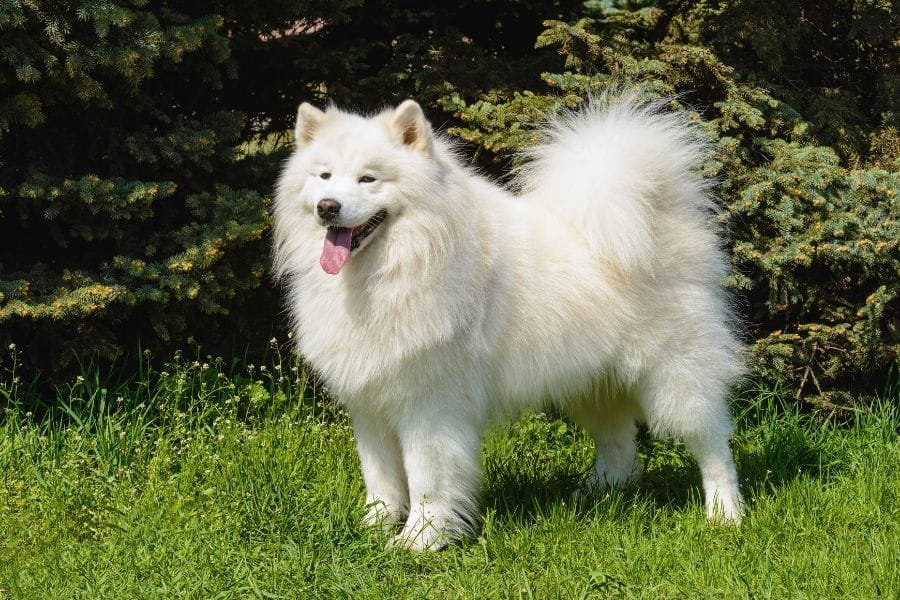
Top 1,000 Most Popular Dog Names
Looking for the perfect dog name for your new pup? We have created filterable lists of dog names from our database of hundreds of thousands of Sniffspot users. You can filter by gender, breed and state to find the most cute, unique and creative dog names.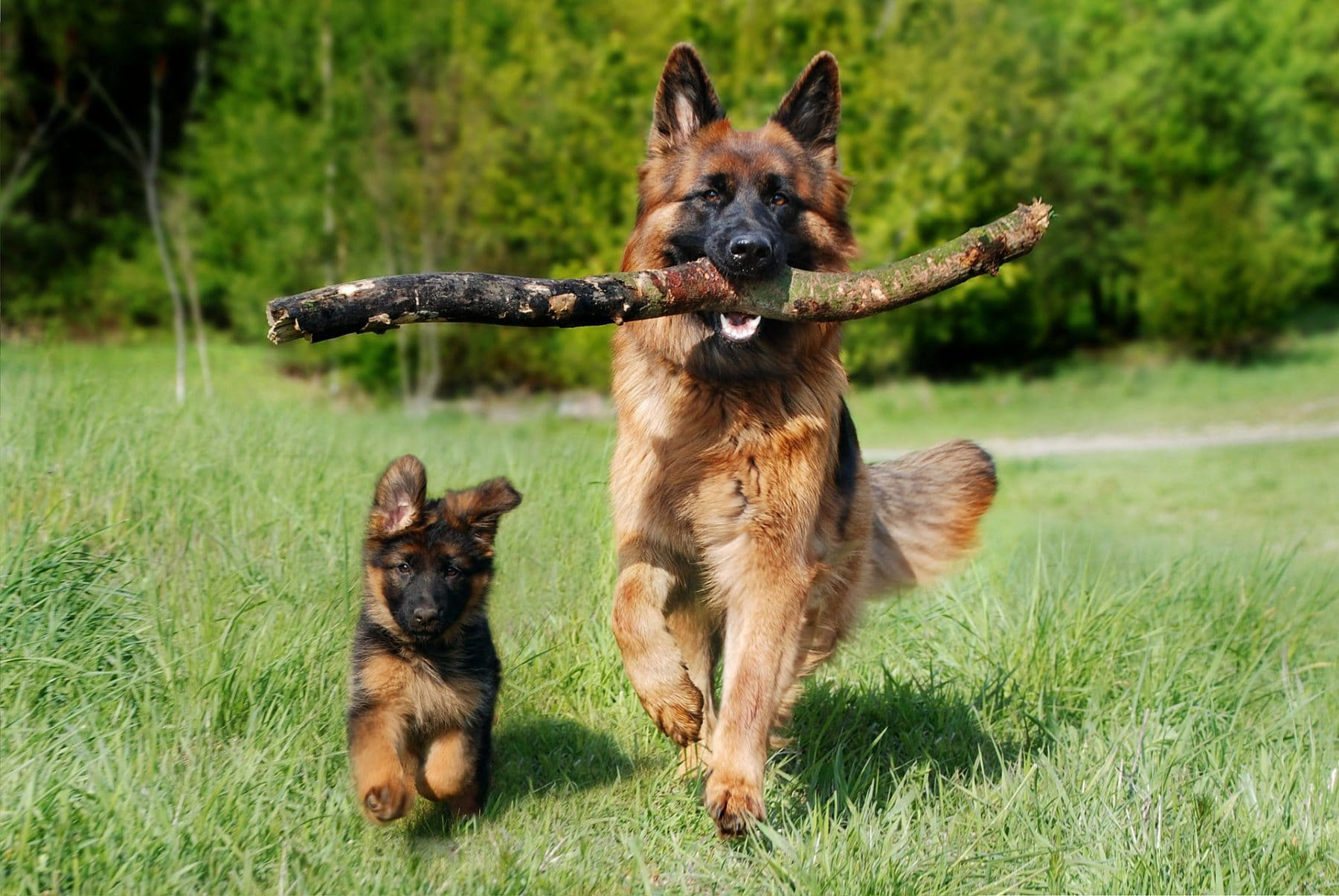
Most Popular Male Dog Names
Looking for the perfect dog name for your new male pup? We have created filterable lists of male dog names from our database of hundreds of thousands of Sniffspot users. You can filter by gender, breed and state to find the most cute, unique and creative male dog names.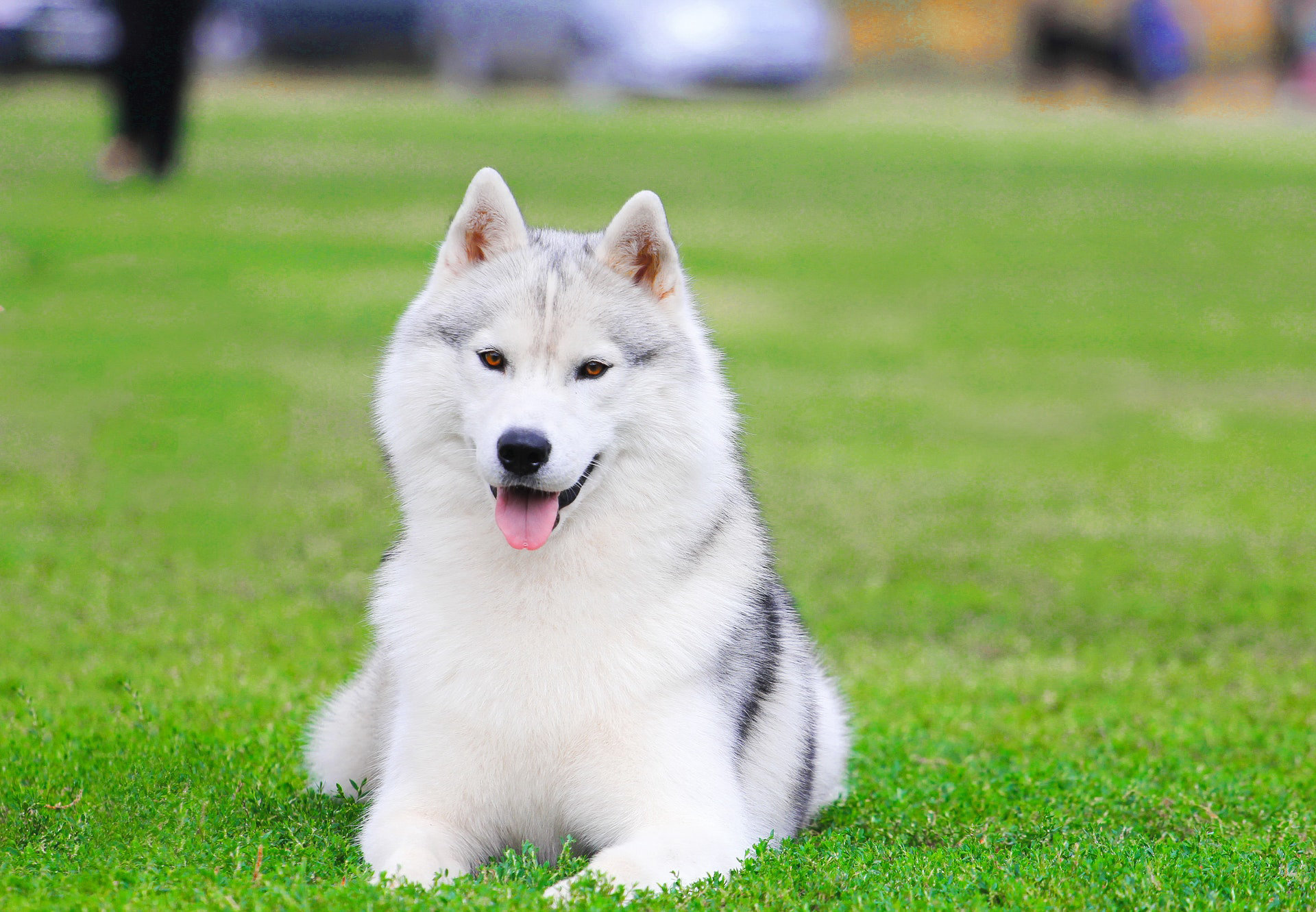
Most Popular Female Dog Names
Looking for the perfect dog name for your new female pup? We have created filterable lists of female dog names from our database of hundreds of thousands of Sniffspot users. You can filter by gender, breed and state to find the most cute, unique and creative female dog names.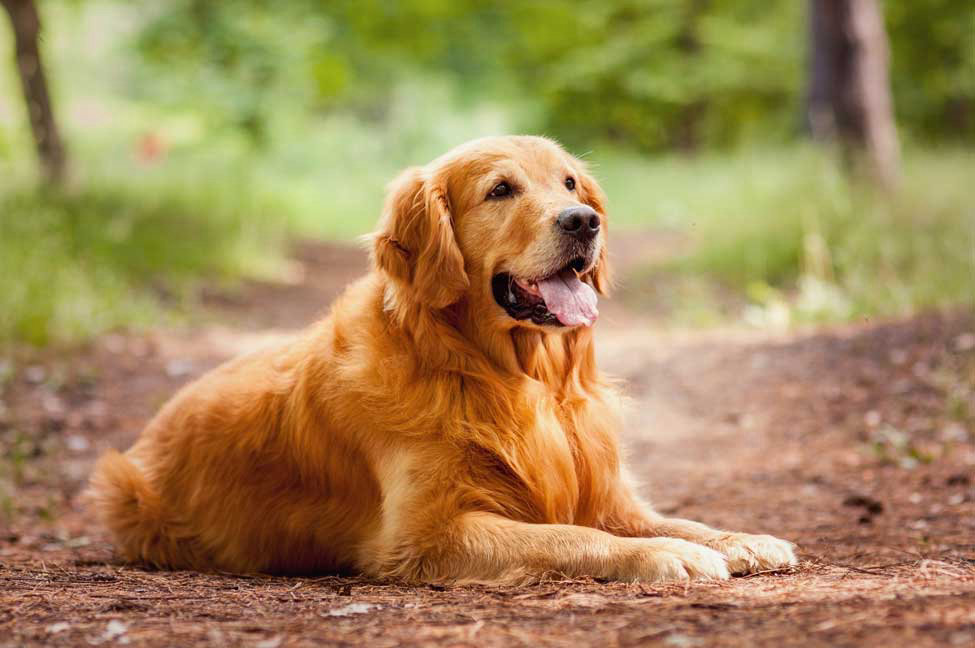
Most Popular Golden Retriever Names
Welcome to our comprehensive list of Golden Retriever dog names, curated from our vast database of Sniffspot users. Filter through hundreds of thousands of options by gender, breed, and state to discover the most adorable, original, and imaginative names for your beloved Golden Retriever.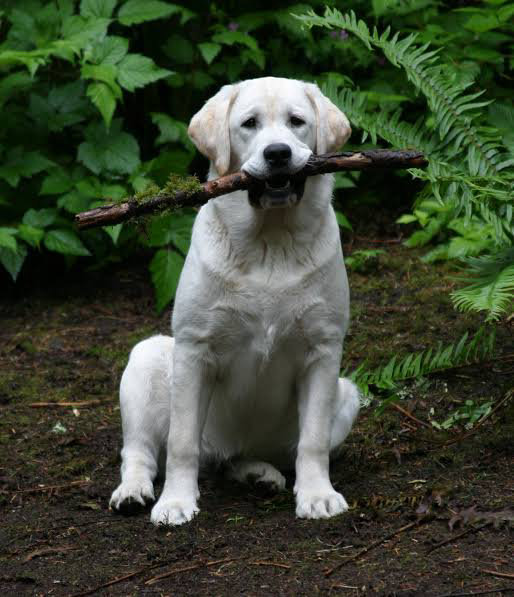
Most Popular Labrador Retriever Names
Welcome to our Labrador Retriever dog names page! Here you can browse through filterable lists of names for your beloved furry friend, ranging from cute and classic to unique and creative options. Our database of hundreds of thousands of Sniffspot users ensures you'll find the perfect name for your Labrador Retriever, whether you're seeking a name for a male or female, based on breed or state.
Top dog rescues in the US

The Best Washington Dog Rescues & Shelters in 2025
This list showcases the top dog rescues & shelters in Washington. These remarkable organizations have been recognized for their unwavering dedication to the well-being of countless dogs.
The Best Oregon Dog Rescues & Shelters in 2025
This list showcases the top dog rescues & shelters in Oregon. These remarkable organizations have been recognized for their unwavering dedication to the well-being of countless dogs.
The Best California Dog Rescues & Shelters in 2025
This list showcases the top dog rescues & shelters in California. These remarkable organizations have been recognized for their unwavering dedication to the well-being of countless dogs.
The Best Florida Dog Rescues & Shelters in 2025
This list showcases the top dog rescues & shelters in Florida. These remarkable organizations have been recognized for their unwavering dedication to the well-being of countless dogs.
The Best New York Dog Rescues & Shelters in 2025
This list showcases the top dog rescues & shelters in New York. These remarkable organizations have been recognized for their unwavering dedication to the well-being of countless dogs.











